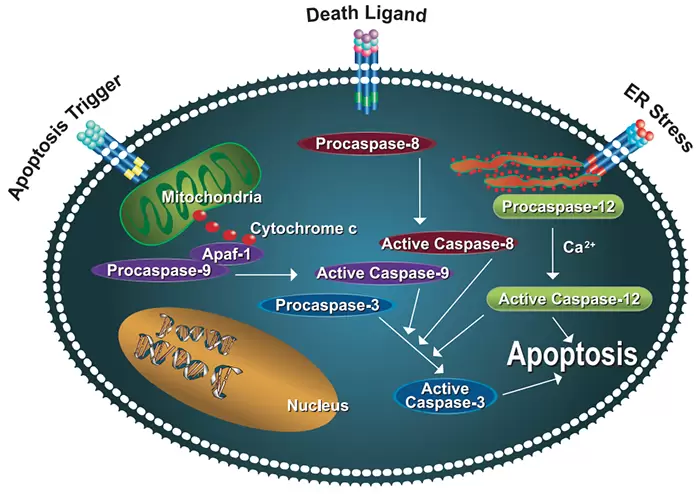Apoptosis
Apoptosis Assays
Apoptosis detection at the early, middle and late stages in the apoptotic cascade
Apoptosis, or programmed cell death, plays an important role in many physiological and diseased conditions. In contrast to necrotic cells, apoptotic cells are characterized morphologically by compaction of the nuclear chromatin, shrinkage of the cytoplasm and production of membrane-bound apoptotic bodies. Biochemically, apoptosis is distinguished by fragmentation of the genome and cleavage or degradation of several cellular proteins.
Monitoring the cell's progression to apoptosis, detecting the apoptotic cells, and developing drugs that regulate the apoptotic pathways are the essential parts of basic research. Additionally, many diseases like cancer, autoimmune diseases and neurodegenerative diseases, like Alzheimer's Huntington's, and ALS involve either a failure of apoptosis to eliminate harmful cells or the inappropriate activation of apoptosis leading to loss of essential cells. The complexity of apoptosis regulation and the large numbers of molecular players in the apoptotic signaling pathways provide ample opportunity for developing therapeutics to modulate the pathway. Apoptosis can in general be divided into membrane mediated, cytoplasm mediated, mitochondria mediated, nucleus mediated and non-caspase mediated apoptosis.
Caspase Activation Pathways

Apoptosis Assays Overview
As no single parameter fully defines cell death in all systems, it is often advantageous to use several different approaches when studying apoptosis. A large number of assays is offered for the detection of apoptosis at the early, middle and late stages of the apoptotic cascade, and for the analysis of apoptotic events that occur in different areas of the cell, including the plasma membrane, cytoplasm, mitochondria and nucleus.